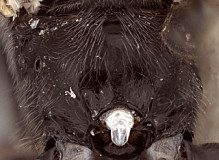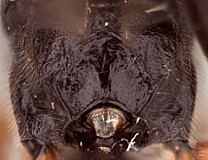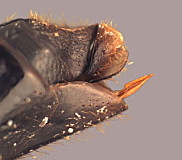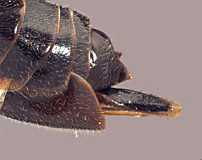Prosmorus Foerster, 1869: 198. Type species: Notopygus resplendens Holmgren, 1855. Included by Thomson (1894: 1983).
Erigloea Foerster, 1869: 202. Type species: Erigloea polita Kriechbaumer [= Xenoschesis resplendens (Holmgren)]. Designated by Viereck (1914: 120).
Polycintus Thomson, 1894: 1983. Unjustified emendation.
The synonymy of Polycinetis with Xenoschesis was attributed to Townes (1945) by Perkins (1962), but Townes (1945) followed Viereck (1914: 120), who designated Exetastes fulvipes Gravenhorst as the type species of Polycinetis Foerster sensu Dalla Torre (1901) and Polycinetis Foerster sensu Thomson (1894). These designations left Polycinetis isogenotypic with Xenoschesis, as noted by Viereck (1914: 120). Townes (1945: 491) attributed authorship of Polycinetis to Thomson and therefore ignored the fact that Viereck (1914: 120), in an apparent attempt to cover all the bases, also listed resplendens as the type species of Polycinetis Foerster sensu Woldstedt (1877). Townes (1970) ultimately accepted Foerster’s genera as valid and listed resplendens as the type species of Polycinetis, attributing this to Woldstedt (1877).
The type species of Polycinetis is listed as a junior synonym of Tryphon ustulatus Desvignes, 1856 by Yu et al. (2012)





